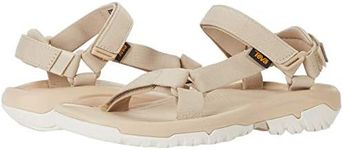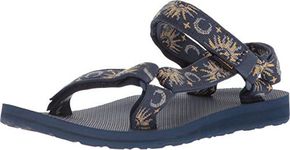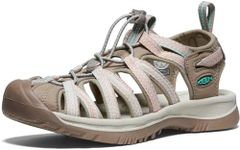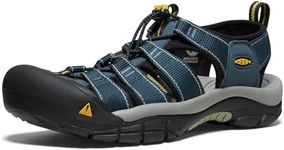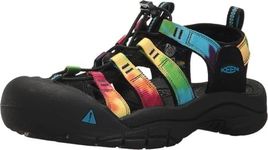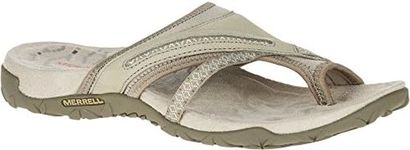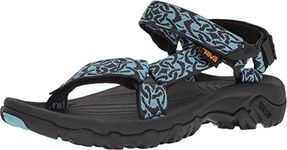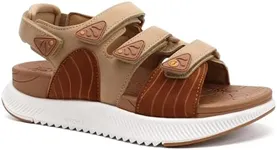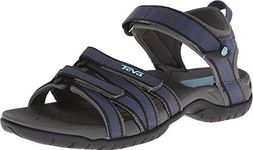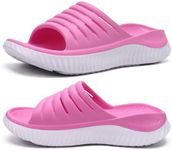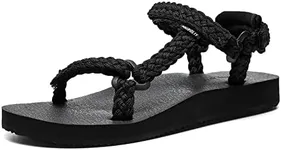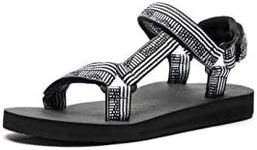Buying Guide for the Best Hiking Sandals
Choosing the right hiking sandals is crucial for a comfortable and enjoyable outdoor experience. Hiking sandals are designed to provide support, protection, and comfort while allowing your feet to breathe. When selecting a pair, consider the terrain you'll be hiking on, the duration of your hikes, and your personal comfort preferences. Here are some key specifications to help you make an informed decision.Fit and ComfortFit and comfort are paramount when choosing hiking sandals. A good fit ensures that your feet are well-supported and reduces the risk of blisters and discomfort. Hiking sandals should have adjustable straps to secure your feet properly. When trying on sandals, make sure there is enough room for your toes to move freely, but not so much that your feet slide around. Consider the shape of your foot and look for sandals that offer a snug, yet comfortable fit.
Arch SupportArch support is important for maintaining foot health and preventing fatigue during long hikes. Hiking sandals with good arch support help distribute weight evenly and reduce strain on your feet. If you have high arches, look for sandals with enhanced arch support. For flat feet, choose sandals with moderate arch support to provide stability. Assess your foot type and choose sandals that offer the right level of support for your needs.
TractionTraction refers to the grip of the sandal's sole on various surfaces. Good traction is essential for preventing slips and falls, especially on uneven or slippery terrain. Hiking sandals with rubber outsoles and deep lugs provide better grip. If you plan to hike on rocky or wet surfaces, opt for sandals with aggressive tread patterns. For smoother trails, a less aggressive tread may suffice. Consider the types of terrain you'll encounter and choose sandals with appropriate traction.
DurabilityDurability is a measure of how well the sandals can withstand wear and tear. Hiking sandals should be made from high-quality materials that can endure rough conditions. Look for sandals with sturdy construction, reinforced stitching, and durable soles. If you hike frequently or on challenging trails, prioritize durability to ensure your sandals last longer. For occasional or light hiking, you may opt for lighter, less rugged options.
Water ResistanceWater resistance is important if you plan to hike in wet conditions or cross streams. Water-resistant hiking sandals dry quickly and prevent your feet from staying wet, which can cause blisters and discomfort. Some sandals are made from materials that repel water, while others have drainage holes to allow water to escape. If your hikes involve water crossings or wet environments, choose sandals with good water resistance. For dry trails, this feature may be less critical.
WeightWeight refers to how heavy the sandals are. Lightweight hiking sandals reduce the strain on your legs and feet, making them ideal for long hikes. However, lighter sandals may offer less support and durability. Heavier sandals typically provide more support and protection but can be tiring over long distances. Consider the length and difficulty of your hikes and choose a weight that balances comfort and functionality for your needs.
